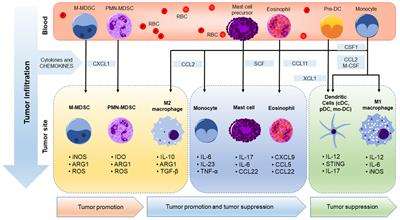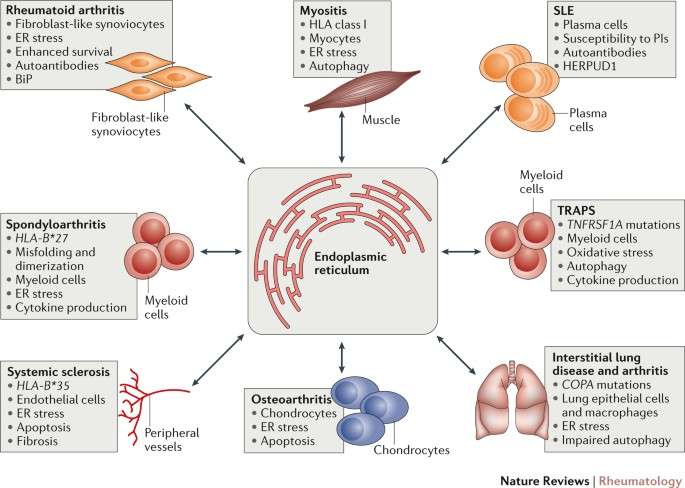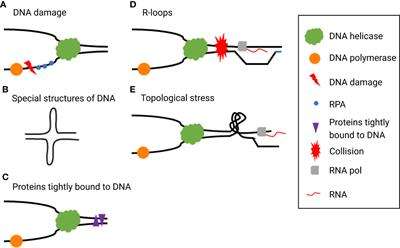Grammar or Meaning
Morphological processes serve different functions. Some occur to alter meaning and/or part of speech (derivational), others show grammatical relationships between words (inflectional). In English, the attachment of ‘-ness’ to an adjective such as ‘faithful’ derives the noun ‘faithfulness’. Likewise, when ‘un-‘ is attached to ‘happy’, meaning is reversed (unhappy). In French, the when ‘-ment’ is added to an adjective root such as ‘douce’ (soft, quiet), the adverb ‘doucement’ (softly, quietly) is formed. These are derivational morphemes.
Inflectional morphemes serve grammatical functions. In English, ‘-s’ is attached to a noun to mark plurality, e.g., ‘street’ sing. streets, pl. In other languages, morphemes must be attached to verbs to mark its subject. In Persian, ‘-æm’ is attached to a verb to show 1st per. sing.
(1)
Mæn ketab mixun- æm.
I book read 1st p.s.
I am reading a book.’
Morphological Processes
Morphological processes alter stems to derive new words. They may change the word’s meaning (derivational) or grammatical function (inflectional). There are various types of processes, not all of which are present in all languages. Some of these are concatenative, meaning that they involve the linear combination of morphemes (affixation, for example), while others are non-concatenative, involving the alternation of internal properties of morphemes
Let’s take a look at several concatinative processes.
Affixation
Every language has its own rules about the structure and formation of its words. Affixation occurs when a morpheme is attached to a root. Affixes are bound morphemes that must be attached to the beginning of a root, i.e., prefix, the end of a root, i.e., suffix, and in other languages, surround a root, i.e., circumfixes, or be inserted into a root, i.e., infixes.
In English affixation is the primary morphological process in constructing words. For example, the prefix ‘un-‘ attaches to stems in such words as unbelievable or unkind. The suffix ‘-s’ attaches to the end of noun roots to mark plurality as in languages or bugs.
For more information on affixation in English, read our tutorial Affixation in English.
Affixation is used in many languages to mark inflections on verbs. Spanish marks verbs for person with a suffix:
(2)
hablar ‘to speak’
hablo ‘I speak’
hablas ‘you (singular) speak’
habla ‘he/she speaks’
Turkish uses the suffix –lar1 to mark plurality.
(3)
kitap ‘book’
kitaplar ‘books.’
Swahili, on the other hand, uses a series of prefixes to mark person, tense, and object of a verb:
(4)
Verbal prefixes in Swahili:
a- ta- ni- penda
he- FUT– me -like
He will like me.
Other languages use infixation to show contrast in meaning or grammatical function. The following examples from Leti2 (Blevins 1999) provide an example:
(5)
Nominalizing -ni- in Leti
kaati ‘to carve’ k-ni-aati ‘carving’
kasi ‘to dig’ k-ni-asi ‘act of digging’
kakri ‘to cry’ k-ni-akri ‘act of crying’
Finally, a circumfix is a morpheme with two parts, one that attaches to the beginning of the word/stem, and one to the end. A common example is the past tense in German, which is formed by affixing a verbal root with ge– and –t. Thus, lachen ‘laugh’ becomes gelacht ‘laughed’.
Reduplication
Another morphological process seen in languages of the world is reduplication. In this case a morpheme or a part of a morpheme is copied or reduplicated and attached to a root or stem. Complete reduplication results from copying the entire word, while partial reduplication copies any number phonemes or syllables.
Reduplication can serve many functions in languages, from making plural forms to marking intensity or diminutives.
Here are a few examples from various languages:
Complete Reduplication in Thai (intensification)
(6)
di: ‘to be good’ dí:di: ‘to be extremely good’
Here the entire word is copied and added to the stem.
Partial Reduplication in the Niutao dialect of Tuvaluan3 (verbs have different forms when used with singular and plural subjects)
(7)
Singular Plural
mafuli mafufuli ‘turned around’
kai kakai ‘eat’
apulu apupulu ‘capsize’
In this example the penultimate syllable is copied and inserted between the initial and second syllables.
Suppletion
Suppletion is a different type of morphological process. While in affixation and reduplication it is often easy to see how one form is related to another, suppletion involves a relationship between two forms that do not share phonological shape. Generally, it is a relationship in which one form cannot be derived phonologically from the other. A few examples are found in Indo-European languages.
In English, adjectives can be used in comparative and superlative forms:
(8)
adjective comparative superlative
nice nicer nicest
sweet sweeter sweetest
To form the comparative –er is attached to the root and for the superlative –est.
However consider the adjective good whose comparative and superlative forms better and best are not phonologically related to their root.
(9)
*good gooder goodest
These words ostensibly have little in common, and yet their meanings are integrally related.
In Spanish, the present tense form of ‘I go’ is voy while the past tense is fui (cf. English ‘go’ and ‘went’). Once again, these have very different forms whose close relationship is not readily apparent.
Non-concatenative Processes
Non-concatenative, or internal changes are morphological processes that alter a word’s internal structure. Such changes can affect vowel quality, or otherwise alter the shape of the word.
Conversion is the process by which a new word is derived without any external change. The root and new form will be related semantically and share phonological realization. Conversion is easily observable in English.
(10)
noun verb
the can to can
the trash to trash
the file to file
verb noun
to call a call
to guess a guess
to sprinkle a sprinkle
adjective noun
light the light
poor the poor
rich the rich
adjective verb
empty to empty
slight to slight
blind to blind
These pairs have raised questions as to which of the two preceded the other. In most cases, a little delving into historical linguistics settles the issues.
Stress Placement and Tone
A shifting in stress and tone can also be used to change a word’s grammatical function or meaning. Many languages in the world use tone contrastively, and therefore may serve to make distinctions between different words and their grammatical functions. In the following examples from Maasai4, only differences in the tones (shown as accent marks over different syllables) of the vowels distinguish the nominative (the subject of a verb) from the accusative (an object of a verb) forms of the following words:
(11)
nominative accusative gloss
èlùkùnyá èlúkúnyá ‘head’
èncùmàtá èncúmátá ‘horse’
Likewise, the shifting of stress results in different meanings even though no visible distinction. Here are a few examples.
(12) Spanish
ˈbe.be ‘s/he drinks’ be.ˈbe ‘baby’
ˈcan.to ‘I sing’ can.ˈto ‘he/she sang’
(13) English
noun verb
ˈcon.duct con.ˈduct
ˈre.cord re.ˈcord
ˈex.tract ex.ˈtract
(The tick indicates that the stress falls on the following syllable).
For example, in English there is a distinction between weak and strong verbs. Weak verbs form the past tense through the addition of a suffix -ed, while strong verbs change their vowel: sing/sang, drive/drove. German uses umlaut, an alternation in vowel quality to mark plurality. vater -‘father’ väter – ‘fathers’.
Some new word forms surface as parts of a root or stem. Truncations generally refer to the process in which a syllable(s) represents a whole. Clippings and diminutives show a reduced form originating from a base.
(14) diminutives
Barbara → Barb
Christopher → Chris
(15) clippings
telephone → phone
refrigerator → fridge
advertisement → ad
Blends show new forms deriving from combinations of syllables from two or more words.
(16)
breakfast + lunch → brunch
guess + estimate → guesstimate
modulator + demodulator → modem
Abbreviations result from a similar process. A new word form is derived by extracting the initial sounds from a phrase. Here the word form is the pronunciation of the individual letters. These can also be referred to as initialisms.
(17)
DC for District of Columbia
MA for Masters of Art
IQ for intelligence quotient
Abbreviations are acronyms when the indiviual sounds are arranged in such a way as to create a word.
(18)
NATO for the North Atlantic Treaty Organisation
ASAP for as soon as possible
SCUBA for Self-Contained Underwater Breathing Apparatus
Compounding is defined as combining two or more stems to form a new word that is stored as a single entry in the lexicon, e.g., ‘blackbird’ or ‘three-year-old’. The meaning of a compound is not affected by spelling. Some are represented as one word as in ‘housefly’, hyphenated as in ‘extra-terrestrial‘ and’out-of-pocket’, or separated by a space as in ‘kill joy‘.
Compounds can be composed of many parts of speech. Some examples from English include:
(19)
noun- noun: ‘horseshoe
noun- verb such: ‘trouble-shoot’
adjective –verb: ‘high-jump’
adjective-adjective: ‘bittersweet’
adjective-noun: ‘jumping bean’
verb-noun: ‘spelling bee’
verb-preposition: ‘push-up’
preposition-verb: ‘out-cast’
All compounds have a head, the element that determines its part of speech. In English, compounds are right-headed, meaning that the right-most constituent determines the grammatical category of the word. For example, the head ‘bird’ in ‘blackbird’ is a noun thus the compound is also a noun. The head of ‘freeze-dry’ is a verb thus the compound is a verb. However, when a preposition is found in the rightmost position, the left element will be the head. This is due to the fact that prepositions are function words that are closed to adding new words. Thus in the compound ‘push-up’ the head is ‘push’.
Compounds are not right-headed in all languages. For instance, in Spanish the compound word lavaplatos ‘dishwasher’ is left-headed: it is an entity that washes lava- a kind of dish, platos. Languages can have compound verb forms such as Dutch that combines weer ‘again’ with schijn ‘to shine’ to form the complex verb weer-schijn ‘to reflect.’ Farsi (Modern Persian) forms many verbs by combining a noun with the verb kaerdaen “to do or make:” fekr ‘thought’ + kaerdan ‘to do’ = fekr kaerdaen ‘to think’.
Compounds are characterized as either endocentric or exocentric. The former means that the compound is semantically transparent from the meaning of its constituents. In other words, it is a type of its head (as blackbird is a type of bird). An exocentric compound is not as easily understood as the sum of its components. For example, a ‘pickpocket’ is not a type of pocket but someone who picks things from pockets.
Incorporation
Incorporation is another form of bringing together one meaning from several. Although different from compounding, incorporation appears to share similar characteristics. There are also important differences between the two. Incorporation is most prevalent in polysynthetic languages, and is a process by which a word (often a verb) incorporates or combines with another word while maintaining its syntactic function. One effect that this has is to decrease the valency of the verb; that is, a verb will take fewer arguments in its incorporated form. Thus a transitive verb that combines with its direct object will then act as an intransitive verb, unable to take additional arguments. The following example from Mohawk (Mithun 2009) an object noun incorporated into the verb:
(20)
k-ahkwenni-onni
1s.a-clothing-make.stative
becomes
kahkwennión:ni
‘I’m making clothes.’
The phrase directly translates as ‘I am clothes-making,’ where the object is a part of the verb itself.
Here is another example, showing both the unincorporated (21a) and incorporated (21b) versions of the sentence from the Southern Wakashan language Nuu-chah-nulth (Wojdak 2004):
(21a)
ʔu- ʔaap- mit-ʔiš čakup maht’ii
buy- PST- 3.IND man house
ʔuʔaamitʔiš čakup maht’ii
‘A man bought a house.’
(21b)
maht’iiʔamitʔiš čakup
house-buy-PST-3.IND man
maht’ii-ʔaap-mit-ʔiš čakup
a man house-bought
‘A man bought a house.’
These sentences show that noun incorporation is not necessarily a required process, but it is a productive form in those languages that employ it. Furthermore, languages have rules specifying what can and cannot be incorporated; in Nuu-chah-nulth, for example, the object may be incorporated into the verb (as in the example above), but the subject may not. Thus while incorporation may not be widely used in languages such as English, it is an important morphological process in many languages of the world.
The examples highlighted here only begin to scratch the surface of the variety of ways in which languages employ various morphological processes to mark contrast. For practice in introductory level analyses, go to our exercises portal and click on ‘morphology’.
R. Aronow
1 –ler is an alternate form (allomorph) of –lar.
2 Leti is an Austronesian language spoken on the island of Leti in Maluku
3 Tuvaluan is an Austronesian Polynesian language spoken in Tuvalu.
4 Maasai is a Nilo-Saharan language spoken in southern Kenya and northern Tanzania.
Back to Morphology Tutorials




